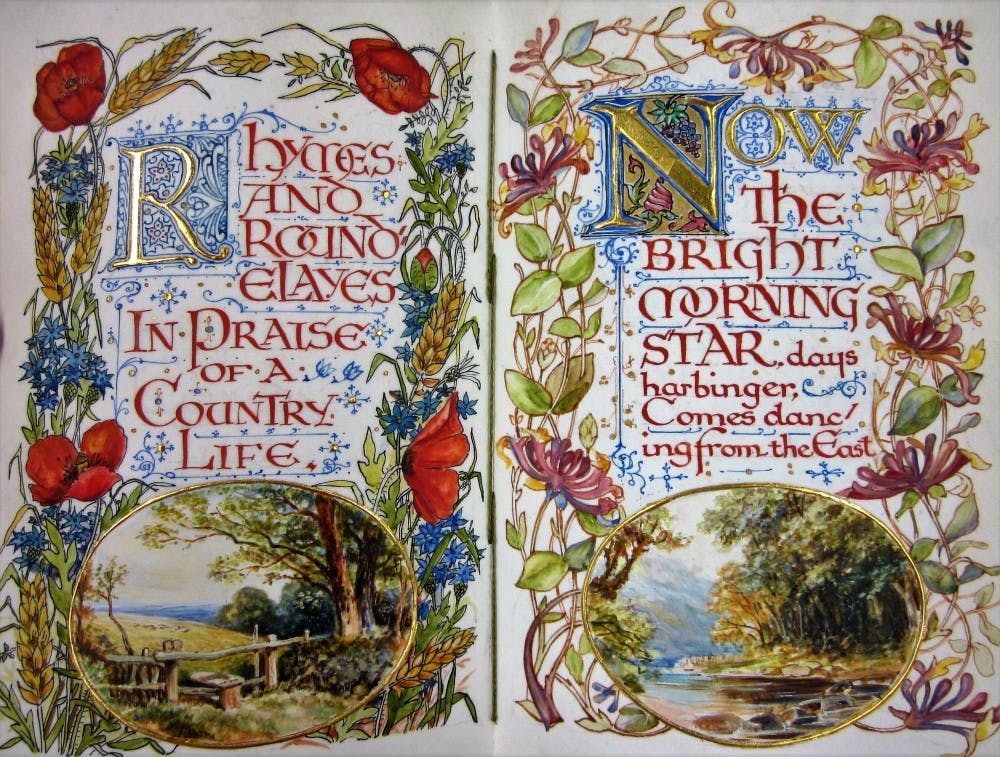Estimated at $150,000, Walt Whitman’s hand-printed, signed copy of “Leaves of Grass” isn’t something most Richmond students would think they could get their hands on, but then again, most Richmond students haven’t been to the Galvin Rare Book Room.
The Rare Book Room, on B1 of the Boatwright Memorial Library, holds 25,000 items including: books, maps, newspapers, music scores and photographs. With its own climate control and security system, the Rare Book Room is built for preservation.
“The main priority is maintaining the books as they are,” said Lynda Kachurek, head of rare books and collections. “The original is the most important.”
Sharing the shelves with Whitman’s 1855 classic are three books considered to be “incunabula,” a Latin phrase meaning “from the infancy of printing.” That means the books were printed, not hand-written, before the year 1501, the oldest one was printed 545 years ago in 1470.
Books are not chosen to be placed in the Rare Book Room based on their age and price alone. Some are kept because of their importance to the university or the city of Richmond, while others are kept simply for being unusual or because they are too fragile to keep on the regular shelves.
One unique book, “Rhymes and Roundelays in Praise of a County Life,” is a collection of English poems that were written, illustrated and bound by a man named Alberto Sangaski in 1904. It is the only copy of this particular book in the world.
“We encourage people to come in and put their hands on a book,” Kachurek said, “to better understand their values.”
Most of the books are donated by collectors who spent a lifetime adding to their collections and want to ensure their preservation. Former University President Edward Ayers donated some of his private collection to the room after he retired from the post.
At about the same time he donated the university's mummy, Ti Ameny Net, to the Department of Classical Studies in 1876, Richmond College professor Jabez Curry also donated a small German manuscript to the Rare Book Room, which has recently garnered some attention.
Very little was known about the medieval text until 2012, when a German history professor from the University of Würzburg, Helmut Flachenecker, spent three days at Richmond reading it cover to cover.
Using skills more suitable for a detective than for a professor, Flachenecker was able to decipher that the manuscript was a prayer book written by two authors for a German noblewoman. He identified the family crest on the cover and was able to ascertain that it was written sometime before 1471, because of the name of a pope written in the pages.
“We went from knowing nothing about that book to being able to put it in the hands of one of four people.” Kachurek said.
Enjoy what you're reading?
Signup for our newsletter
Flachenecker is returning to Richmond next Monday to give a talk about his continued historical detective work on the German prayer book.
The Rare Book Room's collection is particularly strong in materials related to the Civil War, as well as Virginia's political and religious history, but curious students may also find cook books, children’s stories and literary classics.
The Rare Book Room receives around 850 walk-in guests every year, including students and professors on class visits or research projects. Local Richmonders looking to do some research of their own frequently use sources preserved in the Rare Book Room.
“People like to think the Rare Book Room is only about history, but everything has history.” Kachurek said. “The collection is eclectic, which adds to its charm.”
Contact reporter William Shelton at william.shelton@richmond.edu.
Support independent student media
You can make a tax-deductible donation by clicking the button below, which takes you to our secure PayPal account. The page is set up to receive contributions in whatever amount you designate. We look forward to using the money we raise to further our mission of providing honest and accurate information to students, faculty, staff, alumni and others in the general public.
Donate Now



